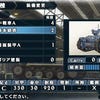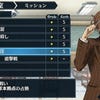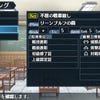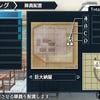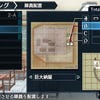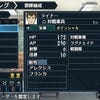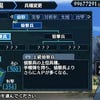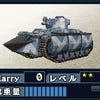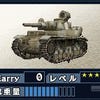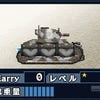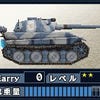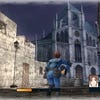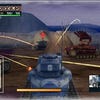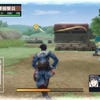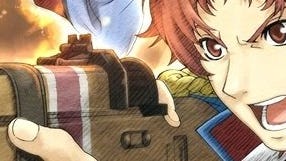Valkyria Chronicles II
Malice in Wonderland.
Lanseal Academy is a Disneyland boot camp. A 200-foot spire at the centre of the military school's grounds jabs at the clouds, while far below a moonfaced clock tower leans heavy on ancient Doric columns. The building is seasoned with the intricate stone decoration of so many fairytale castles, an unlikely centerpiece for an institute designed for little more than turning tweens into cold-eyed soldiers.
Around the citadel, where your character, Avan, has enrolled in the hope of discovering the mystery behind his brother's recent death in the grounds, tanks roll to and fro, while a timpani of blanks rattles around the buildings. This surrounding layout is more Sandhurst than magical kingdom, containing as it does Drill Grounds, an R&D centre and a Briefing Room, all arranged and spaced with uniform precision. It's in this contrast of exaggerated fantasy with the orderly arrangement of a military barracks that Lanseal Academy, Valkyria Chronicles II's central hub, communicates a great deal about the game it houses.
Because, on the one hand, this is the sequel to the smartest tactical RPG of the past five years: a Chess-like military sim built on layered order and immovable mathematics. You direct your handpicked squadron of infantry around each battlefield, flanking opponents in complex manouevres that can outclass even some of PC gaming's most celebrated playpens for the armchair general.
Yet the fantasy elements that overlay this core - the heroic special abilities that trigger with anime fanfare in battle as a character is momentarily inspired, the super-deformed tanks, playground dramas or shrill squeals of female soldiers in victory - are a far cry from the sombre reality of this subject matter. It's as if the Somme was remade as a High School Musical spin-off.
For fans of the first game, the unusual concoction will come as no surprise. The PS3's Valkyria Chronicles was a game that blossomed in a hotbed of borrowed ideas from disparate influences. Somehow the marriage of crayon-effect visuals with stories of villages razed to the ground by heavy tank fire, or the mash-up of melancholic French Horns to mark the passing of a beloved soldier, and furious J-pop drumbeats to mark the arrival of the next, worked wonders. This sequel is no different, holding its ideas in awkward but endearing tension.
In terms of its systems too, Valkyria Chronicles II, like its forebear, is a melting pot of design ideas. Each mission begins as in Advance Wars et al, with a top-down view of a battlefield punctuated by coloured icons representing friendly and enemy infantry and vehicles. Select a unit, and the camera swoops down to an over-the-shoulder view of the field itself. A Command Point gauge slowly depletes as you move your soldier in real time around the environment, moving, attacking or capturing enemy bases. During the 'turn' you can make a single attack upon an enemy, lining up a reticule on your opponent and sitting back as the move plays out, the outcome of which is based on various statistical factors.
When your CP is used up you return to the map view, regardless of whether you left your soldier crouching in safety behind a sandbag or standing in the open, metres from the barrel of an enemy's gun. You have a set number of moves per turn, during which you can choose to manoeuvre another unit or, unusually, continue moving the same one. Once all of your moves are used up, control switches to the opposing side, and thereafter back and forth until the mission objective is won or lost.
This straightforward core is made more complex by a slew of factors and sub-systems. Infantry are divided into five basic classes (with a huge number of further specialisations - this sequel's primary improvement - unlocking as you level them up), each of which has its own strengths, weaknesses and weapon specialisations.







